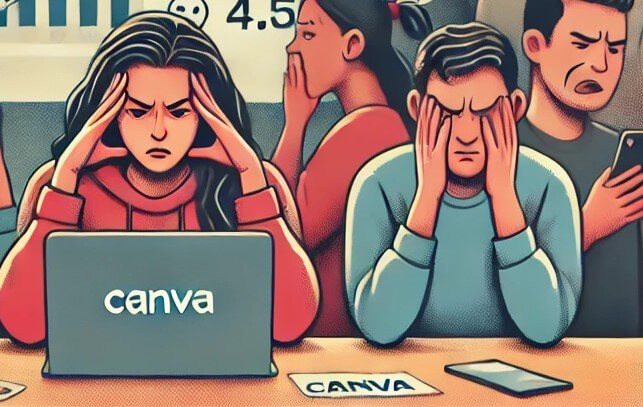Canva, the popular design platform known for its ease of use and affordability, is significantly increasing prices for its Teams product, sparking frustration among many long-time customers. The price hikes, which in some cases represent a steep jump, are attributed in part to Canva’s growing investment in generative AI tools and its expanding suite of features.
The Details of the Price Hike

For U.S. customers on older pricing plans, the cost for a five-person Canva Teams subscription is rising from $119.99 per year to $500 annually, though Canva is offering a 40% discount for the first 12 months. Meanwhile, in Australia, the flat rate of $39.99 AUD (around $26 USD) per month for up to five users has been replaced with a new price of $13.50 AUD per user, a considerable increase for smaller teams.
Individual user pricing for Canva Teams is now set at $100 per person annually, or $10 per person per month, with a minimum of three users required. These changes, which were quietly introduced earlier this year for new customers, are now being applied to existing customers on legacy plans who had been paying the lower rates.
It’s important to note that these price increases do not affect Canva’s Pro or Enterprise tiers, which remain unchanged.
Why the Price Increase?
Canva pointed to the expanding capabilities of its platform — particularly its growing suite of generative AI tools, like Magic Studio — as the primary driver behind the price hike. A Canva spokesperson explained that the original pricing was set during the early stages of the Teams product and had remained unchanged for four years. With the platform now offering a broader array of features, the company felt it was necessary to update its pricing model to reflect this enhanced user experience.

“We’re now updating the price for customers on this older plan to reflect our expanded product experience,” the spokesperson said in a statement to TechCrunch. Canva’s AI-driven tools, such as those enabling quick design suggestions and image generation, have been a key focus as the company seeks to stay competitive in the rapidly evolving design software space.
Customer Backlash
Despite Canva’s explanation, the price hikes have not been well received by many users, particularly those accustomed to the platform’s reputation as an affordable alternative to more expensive design software like Adobe’s Creative Cloud. Customers have voiced their frustrations over the steep increase, particularly the fact that Canva communicated the change through emails to affected users rather than making a public announcement, as it has done with past updates.
This price adjustment represents a marked departure from Canva’s initial positioning as a budget-friendly tool for individuals and small teams. Some users view the increase as a reflection of the company’s rapid growth and a possible sign that Canva is preparing for its anticipated IPO.
Canva’s Expanding Footprint

In recent years, Canva has been rapidly scaling both its product offerings and its business operations. In March, the company acquired U.K.-based graphic design software firm Serif for approximately $380 million, and in August, it purchased the generative AI image company Leonardo. These acquisitions, along with the ongoing development of AI-powered tools, indicate Canva’s aggressive expansion strategy.
From my perspective, the price hikes appear to be part of Canva’s broader plan to position itself as a more sophisticated design platform, especially as it integrates cutting-edge AI technology. However, this shift also reflects the growing tension between maintaining affordability for everyday users and catering to larger, more professional teams with advanced needs.
Implications for Canva’s Future
As Canva readies itself for a potential IPO, the decision to raise prices may be aimed at driving profitability and demonstrating to investors that the company can generate significant revenue from its growing user base. However, the company will need to carefully balance its pursuit of higher revenues with its reputation for providing accessible design tools.
In conclusion, while the price increases reflect Canva’s expansion into more advanced AI-driven services, the company risks alienating some of its loyal customers who were drawn to the platform for its affordability. As Canva continues to evolve, it will be crucial for the company to manage user expectations and ensure that its value proposition remains clear — especially as it competes in an increasingly crowded design software market.






